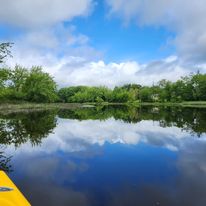When I first started thinking about Universal Design for Learning, I was overwhelmed. I thought, "sure, it looks good on paper, but how am I actually going to do that?!"
So I looked at my existing teaching methods to see if I was already applying principles of Universal Design for Learning to make learning more accessible and engaging for my students. As it turns out, in some ways I was: I provided choices to my students, I used technology to teach and provided students with opportunities to use technology to learn, and I tried to make learning as engaging as possible through the use of games and kinesthetic activities.
Instead of completely overhauling my teaching methods, I decided to build on what I was already doing, look for areas that need improvement, and continually make changes with UDL in mind.
Here is a list of some ways teachers can make learning more engaging and accessible in a UDL framework:
- Make everyday materials easily accessible in the classroom. Have baskets of sharpened pencils, erasers, paper, and other materials within reach of students, and label each basket with words and pictures (to help promote literacy).
- Use a visual schedule for the entire classroom. Although this is frequently used for students who have autism, all students benefit from knowing what they will do next, or throughout the day.
- Provide opportunities for students to learn through multiple intelligences.
- Activate background knowledge when introducing new skills/concepts.
- Give students choices in how to demonstrate their learning of a concept/skill. Bingo grids are just one example of how to do this- give students a 3x3 grid with one activity per square, and allow them to complete just one row, or four corners (some students may do all of the activities).
- Use technology to maximize learning:
- Use a class website to post links to games, videos, and to communicate with students and parents.
- Find instructional videos and songs that are linked to the curriculum.
- Play games on a SMART board.
- Students can use computers to read (text-to-speech software, online stories on http://raz-kids.com
or http://tumblebooks.com).
- Students can use computers to make powerpoint presentations, type stories/essays, draw, etc.
- Use the closed caption feature on youtube - this can be beneficial for students who are
learning English, but other students can also benefit from seeing the closed caption while viewing the
video.
- You can record video tutorials (e.g. addition strategies) and post them on a class website.This allows
students to review lessons independently at school and at home.
- Pencil and paper tests are only one way to assess learning - and not the only way! Observe students as they complete class work, have conferences with students, take anecdotal notes, assign projects and use a rubric to evaluate their performance, etc.
- Students can learn variety of groupings. In mixed-ability groups, students can take on different roles and can help one another. Leveled groupings can also be used on occasion and teachers can concentrate their efforts on assisting groups of struggling learners.
- Focus on the outcomes, and eliminate barriers that are not related to the curriculum outcome being measured. For example, support written directions with pictures in Math and/or read directions aloud so students can focus on the Math, not on reading. Another example: if students are expected to demonstrate their understanding of an outcome in Science or Social Studies, but writing is not a curriculum outcome in that subject, then instead of expecting all students to write a report, give students the option to make a powerpoint presentation, perform a skit, or create a model.
This list is far from complete, but I hope you find it helpful.

